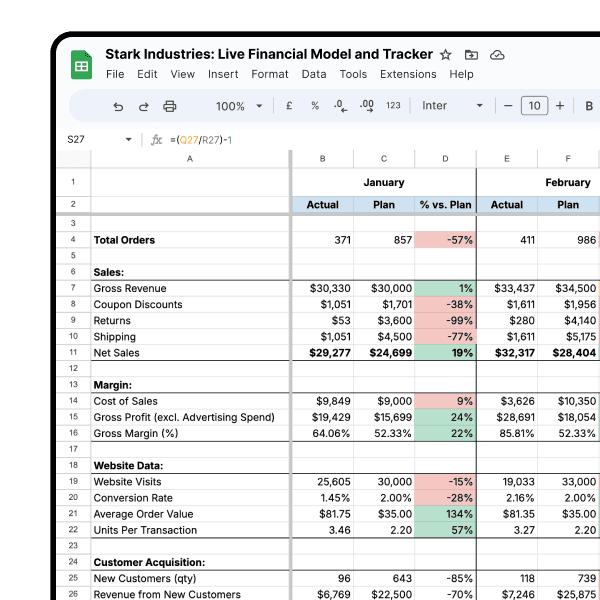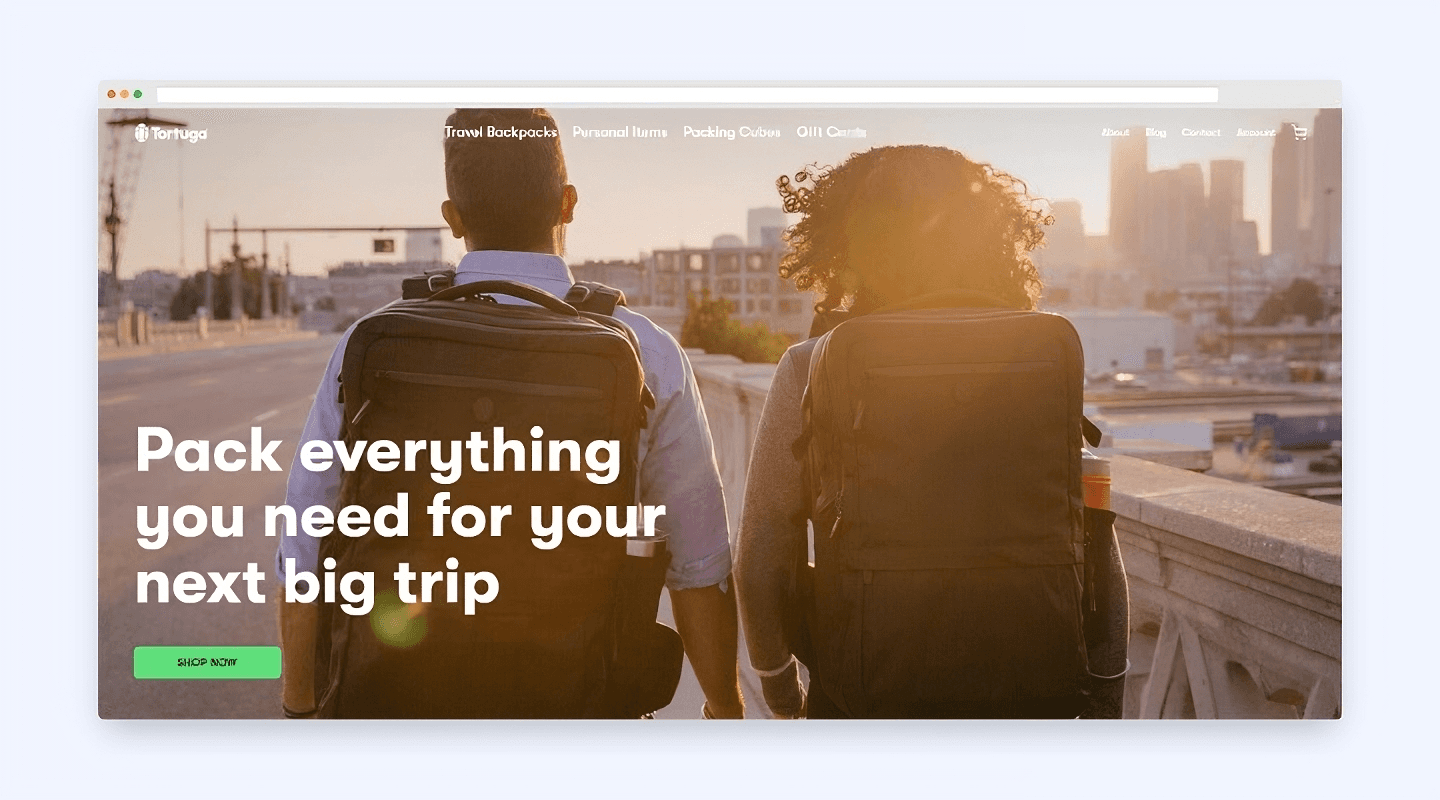Best Practices
Apr 1, 2022
TLDR
Tortuga Backpacks, founded by Fred Perrotta and Jeremy Michael Cohen, used content marketing to grow their brand when they couldn't afford paid advertising. Their SEO-focused blog strategy paid off, with organic search accounting for 100% of their February website visits. They leveraged platforms like Medium for early brand awareness, prioritized content over discounts to engage their audience, regularly updated high-performing blog posts, and repurposed content throughout the customer journey. This approach helped them attract engaged readers and nurture them into customers, proving the value of consistent content creation for traffic and conversions.
Tortuga Backpacks’ story reads like a startup’s dream. In 2009, the two co-founders Fred Perrotta and Jeremy Michael Cohen discovered a huge problem while traveling across Europe together - there were no good quality backpacks made specifically for urban traveling. Unable to find any solutions, they set out to create the travel backpack they needed. With a limited startup budget and no experience, they experimented with product as well as marketing to find their core audience. Today, they are a multi million dollar business, with zero investors, a distributed team, and no office—truly embracing the remote working and traveling lifestyle their brand is all about.
Perrotta worked in Google and was experienced in performance marketing, but paid ads did not work to get the fledgling travel backpack company off the ground. Strapped for cash and unable to afford steep acquisition costs, they focused on the cheapest method of marketing - blog posts. Though slow to start, it worked; and it still works today, more than 10 years later. In February, 100% of their total search visits were organic, as shown in the data below from Similarweb.

Organic visits were also trending upwards in the last three weeks, boosted no doubt by the growing interest in travel as spring approaches and travel restrictions are eased.
Search is currently the biggest driver of traffic to their website (63.4%), with direct traffic (16%) and email (11.5%) coming in second and third place. (Source: Similarweb)
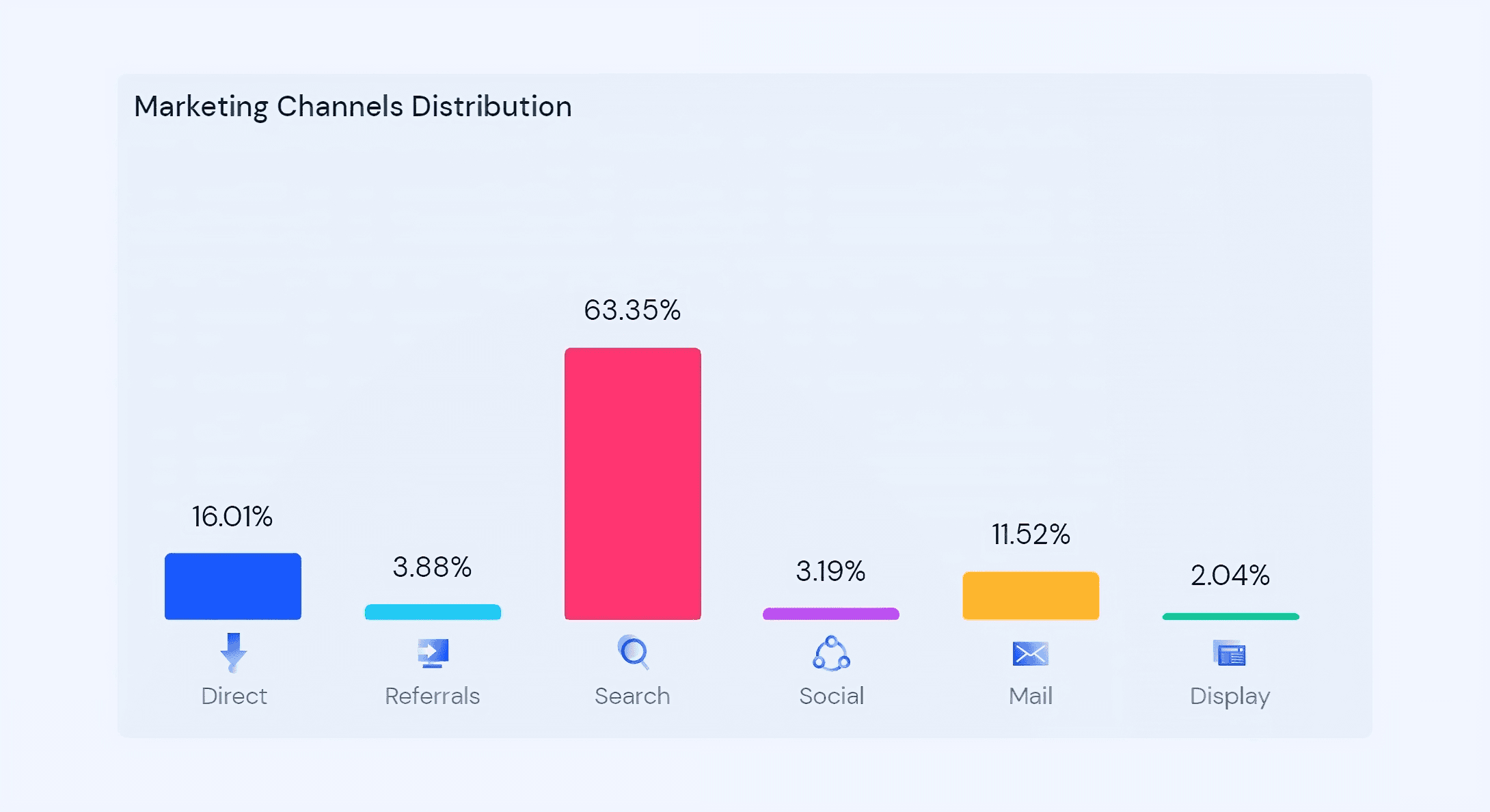
What worked well for them was that they were already full steam ahead with their content creation efforts, even while still struggling with product market fit. They only really began to see the benefits of their SEO strategy in 2014. “All of the blogging that we’d been doing for the last two years started to pay off once we had a product worth buying,” Perrotta shares.
How did they manage to achieve this dream scenario? We delve into their journey and find four actionable points that we can apply.
Use popular platforms to raise early brand awareness.
While Tortuga runs a very popular blog right now, that was not always the case. In the early stages, Tortuga also had a publication on Medium titled On Your Terms. This channel would focus on broader topics such as travel, entrepreneurship, remote work, work-life balance and so on. This allowed them to cast a wider net while they built up their audience, so that they could have a large reader base to make up the top of their funnel.
There are technical benefits to building an audience on a more established platform, too. Having a publication on a more established channel like Medium can be a great boost to discoverability for a startup company in its beginnings. The company can take advantage of Medium’s higher domain authority such that their articles would show up higher on Search Engine Results Pages (SERPs). Simultaneously, the articles can link back to the main website and product pages, eventually sending traffic back to them.
Now that Tortuga has a steady flow of traffic coming to its website, it can afford to axe its Medium page and focus all of its efforts onto its main marketing channel, which is their blog. As shown in the screenshot below, many of the blog topics target the awareness stage of a potential buyer, such as “packing list for italy” and “jfk vs laguardia”.
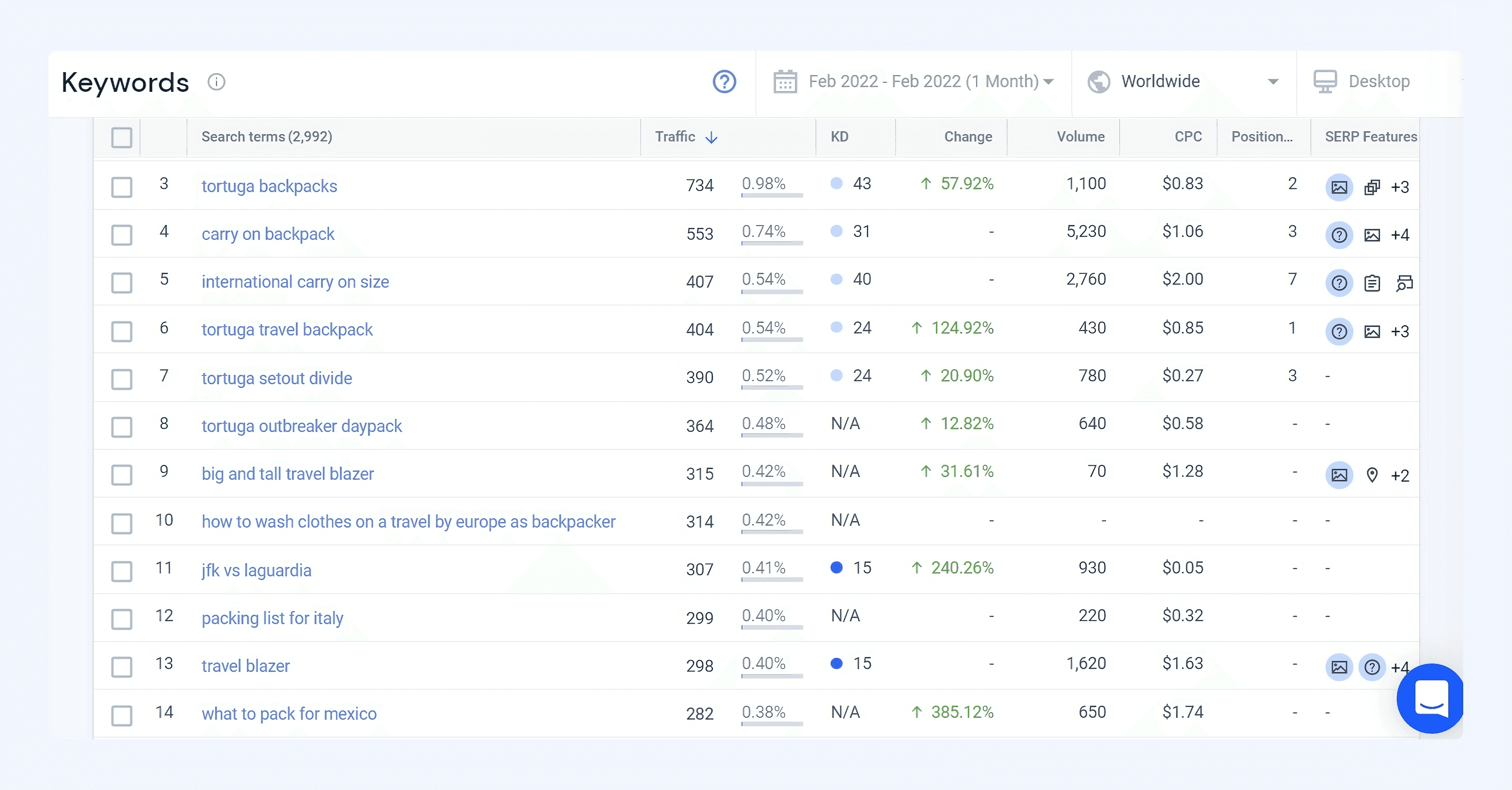
Because their product is a higher ticket item with a much longer buying decision process, they do not focus on short term customer acquisition channels. Instead, they put in a lot of effort to publish more content geared towards awareness to ‘acquire’ a base of engaged blog readers, and nurture them to purchase from Tortuga when their purchasing need arises.
Marketing director Taylor Coil calls the buying decision process for luggage “a considered purchase”.
“From the first moment that someone learns about our brand to the day they complete their purchase can be 30 to 90 days.” - Taylor Coil
Use content, not discounts, to drive traffic to your products.
A customer is likely to only make one or two purchases of travel backpacks in their lifetime, and thus their customer lifetime value is quite limited. Tortuga had to find other ways to keep their audience engaged. To do that, they leaned fully into their blog to keep bringing people back to their website.
The data below shows an interesting discovery: the website’s top visited page isn’t even their homepage. It’s a blog post covering all the airports one can arrive at in New York City. This one page brought in 10% of the entire website’s traffic in February. That’s 10% of just under 300,000 visits according to Similarweb, which makes approximately 30,000 visits through one blog post alone.
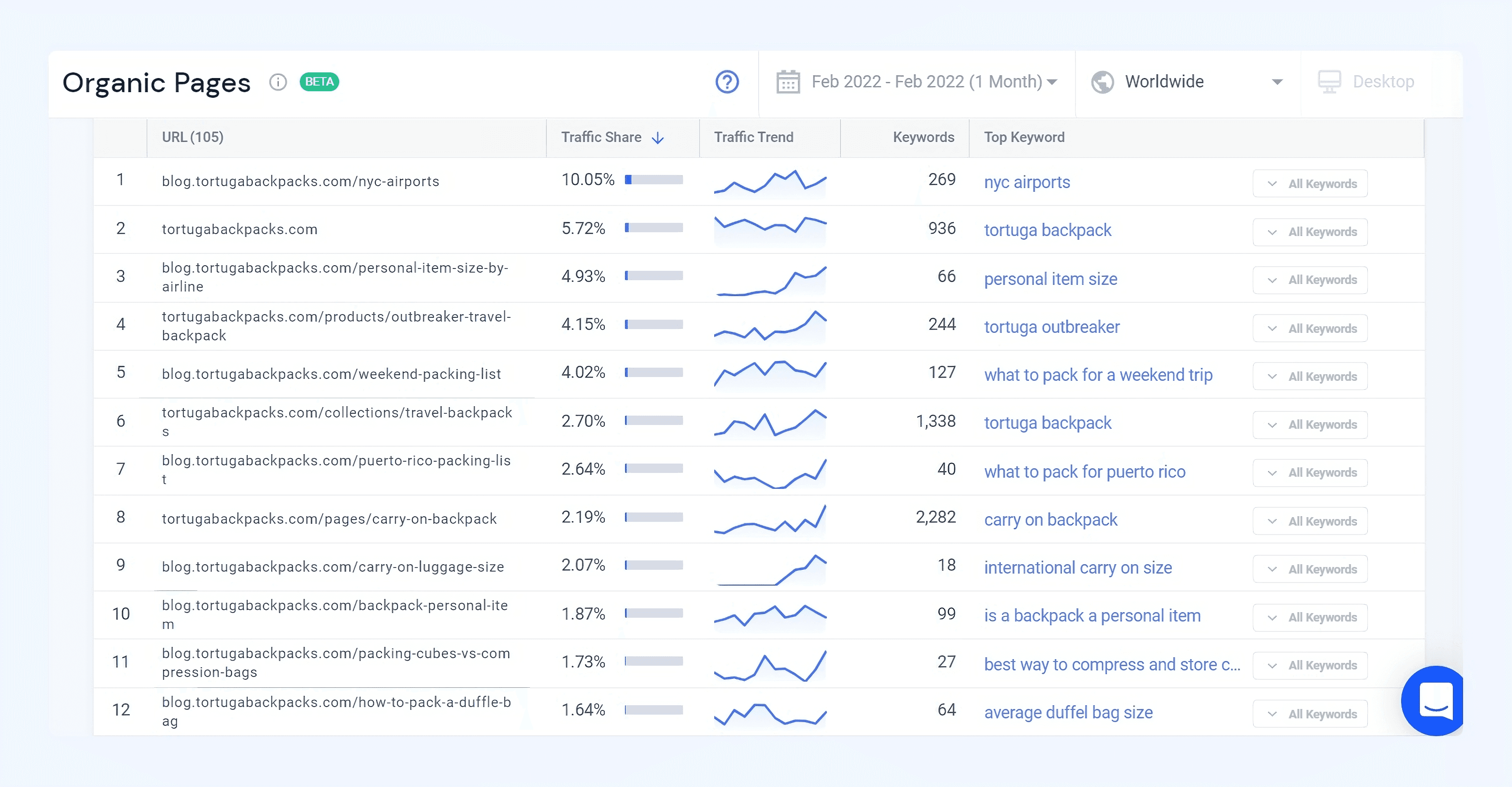
Once visitors are on the page, Tortuga can track how engaged they are, e.g. how much of the page was read, how many links they clicked, whether readers went on to interact with product pages, and so on. Since continued engagement is more important to the company than quick conversion, their blog strategy makes the most sense for them. Bringing people to the website repeatedly over time helps Tortuga assess their visitors’ propensity to eventually make a purchase from their website when the time comes.
Tortuga tracks their customer journey using Kissmetrics’ first-touch and mid-funnel attribution models to evaluate how likely a customer is to purchase. They are also able to assess the performance of their blog posts in terms of generating traffic, bringing visitors to product pages, and eventually leading to a sale.
Revisit your best performing posts; don’t just churn out new posts endlessly.
With blog posts, you don’t want to just love them and leave them. Perrotta believes in going back over existing blog posts and finding ways to improve their performance in rankings.
“Our goal is to create the most authoritative guide to each topic that we cover.” - Fred Perrotta
Some things his team does to improve their blog posts include:
Update information to reflect recent changes where applicable
Add more details where needed
Fix broken links and other technical issues
Revisiting blog posts also helps you discover which topics people are interested in the most. Tortuga found that their readers were most interested to know about “what to bring and how to pack it”. They then are able to focus their content creation on specific topics, such as packing lists by destination, weather, or situation. They also serve a more interested and engaged group of readers by going deep into the topic of packing, such as putting shoes in the middle of the backpack and not at the bottom for better weight distribution, or whether to roll or fold clothes.
Improve your DTC game. Sign up for weekly tips.
Repurpose content for various stages along the funnel.
Good content can, and should, be repurposed. Tortuga sprinkles content across the full lifecycle of a customer journey, even after purchase. Below is an outline of how they do it, following a traditional marketing funnel:
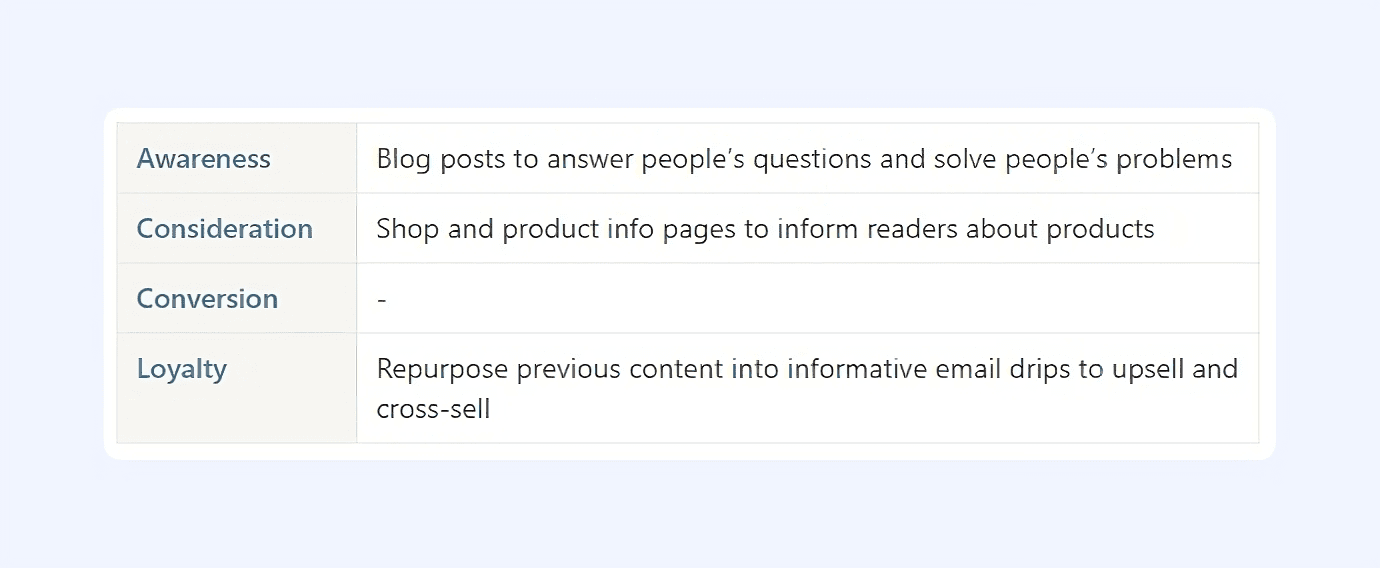
They use the post-purchase email drip like a user manual for how customers can make the most out of the bag they’ve already purchased, while introducing accessories they may want to add on later. The company will reuse content from their blog and especially their product pages for this purpose. “Yeah, it's a sales message, and we're trying to accomplish that,” says Perrotta. “But we're also doing it by showing them why it makes sense, and hopefully showing them, hey, here's another problem people encounter when they travel, and we can solve it for you, and here's how that would work.”
Their product pages contain not just product information like dimensions, weight and basic features, but also in-depth details like what items fit in the backpack, a video showcase, and a walkthrough of all the product features. These pages also play a dual function, not just to inform potential customers, but also for SEO. Product information about the backpack can be crawled by search engine spiders, helping other consumers discover the brand. To keep the product pages from looking too cluttered, they hide the more in-depth information under an Expand button. Coil mentions that most site visitors don’t click on this button, but those who do have a higher conversion rate than the others.
With Airboxr, you can easily track sales conversions from organic channels, ads, direct, email and SMS in your Google spreadsheets. Use our Source/Medium Performance over Time Hop and run it on schedule for automated daily reporting.

Tortuga’s story shows the benefit of a consistent and focused approach to content creation in driving traffic to their website. By driving large volumes of search traffic, they are able to analyze their user behavior on the website, to understand what types of content tend to make people convert. They are also able to identify their top performers in terms of content, so that they can identify niches to double down on. At every point of the customer’s journey, they offer information, solutions, and support, so that when the right time comes, conversion takes care of itself.
